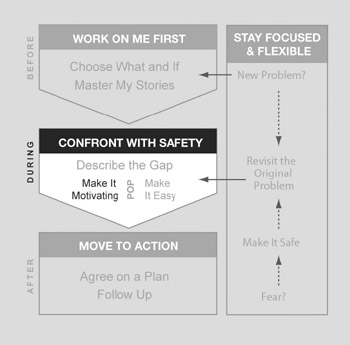Chapter Summary
Make It Motivating
We ve carefully described the gap and are now listening to see if the problem is due to motivation or ability. In this chapter, we examined the motivational side of the model.
When the other person isn t motivated, it s our job to make it motivating.

-
Consequences motivate. Motivation isn t something you do to someone. People already want to do things. They re motivated by the consequences they anticipate. And since any action leads to a variety of consequences, people act on the basis of the overall consequence bundle.
-
Explore natural consequences . Begin by explaining natural consequences. Within a business context, this typically includes what s happening to stakeholders. Stakeholders include other employees , customers, share owners , communities, and regulatory agencies.
-
Match method to circumstances. When people simply want to know, explain both what needs to be done and why. When dealing with someone who is pushing back, resist the temptation to jump to power. Search for consequences that matter to the other person.
-
Finish well. Finally, wrap up the conversation by determining who does what and by when. Then set a follow-up time.
Additional Resources
Struggling to make it motivating ? Refer to Appendix C, When Things Go Right, for tips on motivating with praise. Also, visit www.crucialconfrontations.com/book and learn how you can submit your specific questions to the authors of Crucial Confrontations .
What s Next?
Let s expand our skills to include the other half of our six-source model. Let s learn what to do when the other person is motivated but unable to act.
EAN: 2147483647
Pages: 115